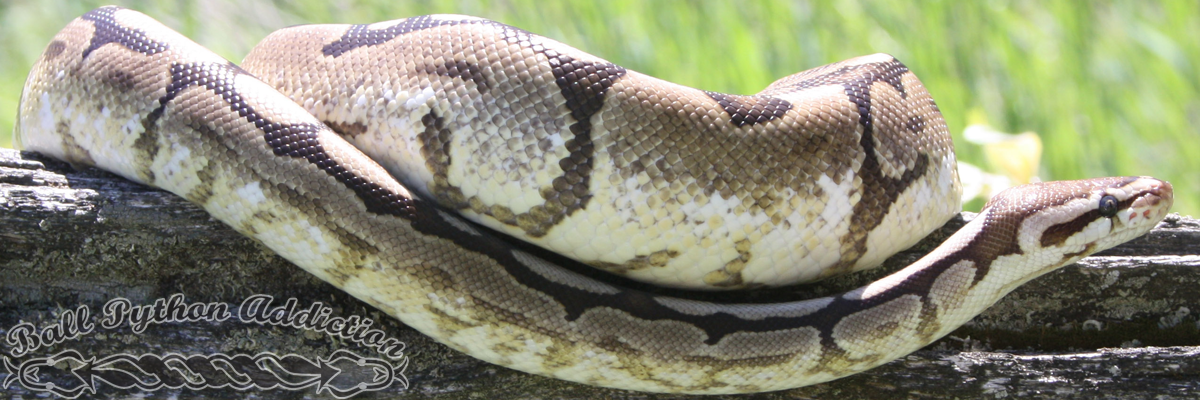The Spider mutation was introduced into this hobby by Kevin McCurley of N.E.R.D., in 1999. Kevin’s single African import spider has spawned the spider revolution to this day. What is incredible about this morph is the variability in colour and pattern from individual to individual. Their tones can vary from dark to light. Their famous webbing dorsal pattern is also highly variable, displaying semi-striped specimens to the classic barb-wire look. Spiders can also sport low and high white sides, funky head patterns, mustache markings, clown tear markings under the eyes and beautiful green coloured eyes.
Spiders are a dominant mutation with no super form. This means that a spider bred to any ball python will, in theory, yield 50% spiders per clutch.
When we were shopping around for spider stock, we were told by the breeder to be aware that all spiders and their mutations were “tweaked”; displaying varying degrees of motor skill impairment. We told him that we already knew, having done our research before our purchase. This behaviour worries many first time spider buyers, who take their new spiders home and notice their weird movements.
Check out the links below for additional articles that address the so called spinning spider or wobble head syndrome evident in the spider mutation. With the proper facts available, one can decide whether a ball python with the spider mutation is right for them.
- “The Spider Mutation and the Associated Wobble Head Syndrome”, from Clay Davenport Captive Bred Reptiles.
- “The real spin on spiders”, from the 8 Ball Blog.
Like many others in the hobby, we chose to work with the spider gene. Despite their quirky behaviour, we love their radical look, we enjoy raising and breeding them. Most spider morphs are outgoing pets, excellent feeders and rapid growers. Spider morphs tend to be early breeders and make some of the best designer combos in the hobby.



